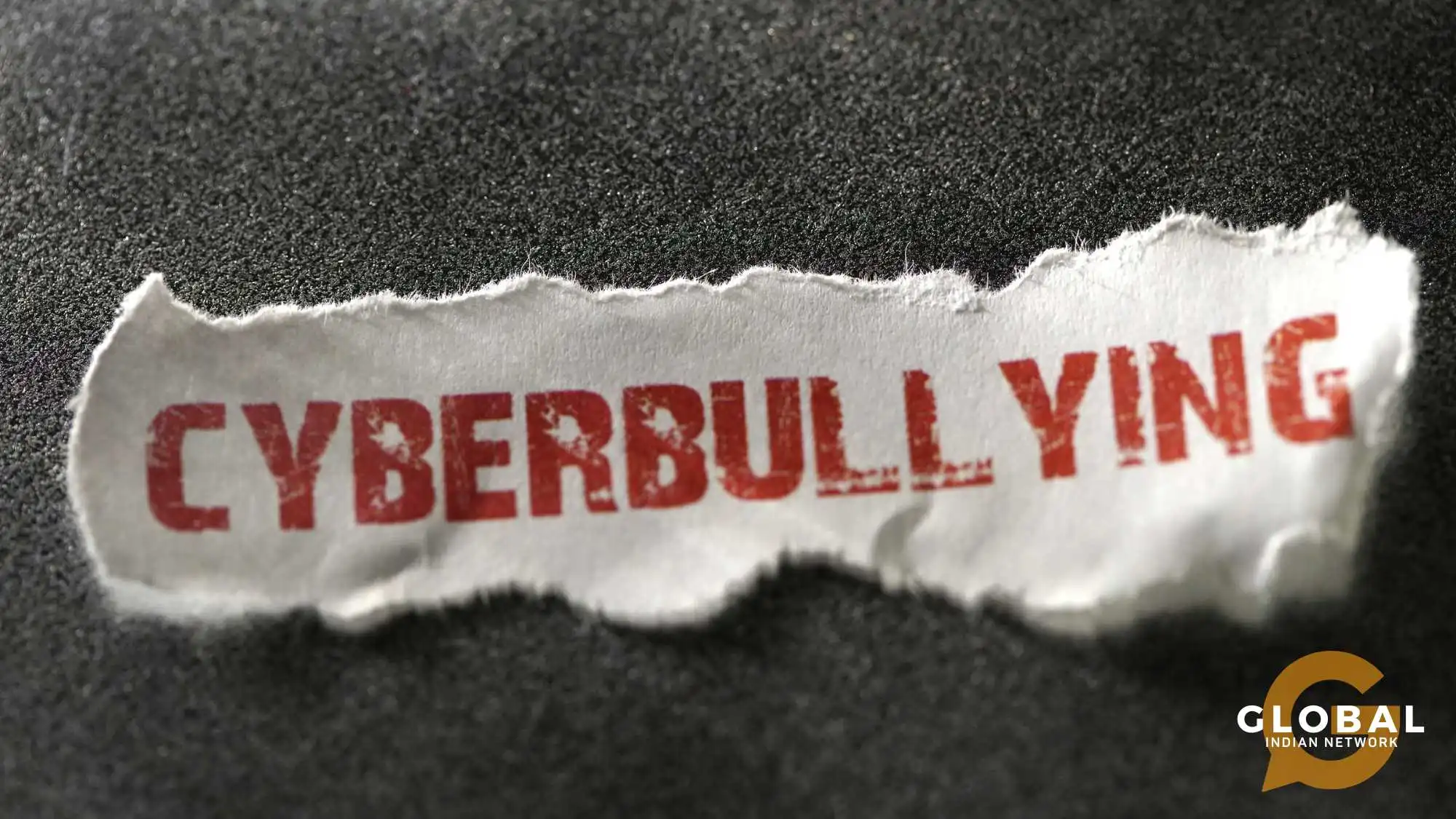In today's world, advancing digital technology has ensured that everyone is interconnected with each other. From Zoom meetings to social media, each person has some sort of dependence on online platforms. However, as enticing as a completely connected world sounds, it also brings with it the issue of those who just want to terrorise and cause harm.
By allowing access to each person who so desires, the online world has given rise to the major issue of cyberbullying. Terrorising people of all ages, cyberbullying has become an infiltrating problem that has the insidious potential to cause all sorts of harm. We all must understand cyberbullying and its impact and also look at a few cyberbullying coping mechanisms that help.
Listen To This Podcast: Kintan Saraswat's Story, a Brutal Reminder of School Bullying
Table of Contents
What is Cyberbullying?
Cyberbullying refers to a pattern of harassment or aggressive behaviour that aims to threaten, harm, humiliate or intimidate someone else via the means of online platforms, social media websites, e-mails or messages. Cyberbullying has become increasingly prevalent, especially among teenagers in the last decade, due to the ease of access to online technology.
Bullying vs Cyberbullying
Cyberbullying is essentially an extension of regular bullying, with some differences. The major difference between the two is the medium of communication through which they occur, with bullying taking place face-to-face and cyberbullying occurring through online interactions.
This difference in the medium of communication further leads to more deviations between the two. The online nature of cyberbullying means that it has the potential to cause harm to a larger group of people, as well as deal damage to individuals who do not necessarily have to be nearby. Another ill-consequence of cyberbullying is that it often allows the perpetrator to maintain anonymity, making it difficult to deal with justice, making it even more important to understand the correct cyberbullying coping mechanisms.
Additionally, owing to the nature of cyberbullying, it has the potential to happen at any time or place, unlike traditional bullying. This causes further anguish to the victim as they may feel unsafe or scared even at places perceived to be comforting or safe, such as their home.
All of this allows cyberbullying the potential to cause mental damage that is more far-reaching to the individual than face-to-face bullying. While traditional bullying can cause physiological damage, cyberbullying can cause a higher deal of psychological damage to the victim. All individuals in this day and age must be equipped with the relevant cyberbullying coping mechanisms to deal with any threat they may face.
Risk Factors
While anyone can be affected by cyberbullying, certain groups are more prone to this form of aggression. The factors that increase an individual's likelihood of facing harassment or vulnerability are known as risk factors. It is crucial to understand these risk factors to develop interventions and employ the right cyberbullying coping mechanisms. These risk factors are discussed below.
Age
Adolescents and teenagers are more likely to experience cyberbullying due to their higher use of digital communication and social media platforms. Younger individuals who are still developing social skills and coping mechanisms may be particularly vulnerable to the negative effects of cyberbullying. Globally, about 45% of teens report having been cyberbullied at least once, and this number stands at a whopping 85% in India.
You Might Be Interested In: Is Bullying Illegal in India? Everything You Need to Know
Gender
Unlike traditional bullying, studies suggest that girls are more likely to be cyberbullied than boys, with about 54% of all girls reporting being cyberbullied, compared to 44% of boys. Interestingly, girls are also more likely to be perpetrators of cyberbullying. Nevertheless, it is essential that regardless of gender, all individuals must be equipped with the right cyberbullying coping mechanisms.
Sexual Orientation
Studies have found that those belonging to the LGBTQ+ community face a higher risk of cyberbullying, with over 50% of them indicating that they have faced cyberbullying multiple times. These individuals are most commonly targeted for their sexual identity or how they express themselves.
Online Presence
Staying online for longer durations comes with a higher risk of cyberbullying. Individuals who are highly active on social media or other online platforms may be at a greater risk of encountering cyberbullying. Additionally, those who share personal information, post frequently or engage in controversial discussions online may attract unwanted attention and harassment.
Previous Experiences with Bullying
Individuals who have had previous experiences with bullying, whether in person or online, are at a higher risk of being targeted once again. Their past experiences often make them vulnerable to the same adverse circumstances again. These individuals must employ correct cyberbullying coping mechanisms.
Impacts of Cyberbullying
Cyberbullying can have a significant and profound impact on the lives of the conflicted. Cyberbullying is also more challenging to recognise or pick up on and thus has the potential to cause subtle damage to individuals. Specifically in children, cyberbullying can have devastating ramifications. Those affected often report low self-esteem, depression and anxiety. In severe cases, cyberbullying can even lead to suicide.
Being targeted by cyberbullying can lead to social withdrawal and isolation as victims may fear further harassment or ridicule from peers. They may also lose trust in others and become reluctant to engage in online and offline social interactions, leading to feelings of loneliness and alienation. This further impacts their social abilities, and they face difficulties forming and maintaining friendships. It is critical that all individuals, especially those with higher risk factors, learn about the correct cyberbullying coping mechanisms.
Read This Article On: The Alarming Rise of Bullying in Schools in India
Cyberbullying Coping Mechanisms
While any form of bullying can be incredibly traumatising to go through, it is crucial to practise effective strategies once you realise that you have been a victim of bullying. We have identified a few effective cyberbullying coping mechanisms and strategies that will no doubt help you move past the negativity.
Find Support
The first coping strategy is to find effective support. While many individuals, especially teens, are embarrassed or scared to talk about their experiences, victims must find a supportive friend or adult to help them through the ordeal. If you, or someone you know, is undergoing cyberbullying, it is cardinal to remember that you are never alone.
Limit Exposure
The second of the cyberbullying coping mechanisms is to limit your exposure. This can be done in a variety of ways. Firstly, you could simply reduce the time you spend on social media. By limiting usage, you minimise your risk factor. Secondly, if a particular individual or online platform/community is troubling you, it is best to avoid them altogether. Another crucial aspect to remember is to never resort to aggression yourself. If particular places on the internet tend to make you act out, it is suggested that you avoid visiting them.
Document Messages and Report
In case you have been a victim of harassment via online messages, email or other methods of online communication, the first course of action is to gather proof. Take screenshots or pictures of the abuse and record it in an orderly manner. This step is very helpful if you decide to report the offender to law enforcement, which is a recommended step as it will deter the bully or another individual from causing harm to others.
Block the Offender
Research has found that the most effective method of dealing with cyberbullies is simply blocking them. While most users are aware that they are well within their rights to block an individual in case they threaten their well-being, some children simply aren't aware. It is crucial to let children know to block people who harass or threaten them and to report their profiles to their respective social media platforms.
Foster Self Care and Positivity
The last of the cyberbullying coping mechanisms we will be looking at is fostering self-care and positivity for yourself. While cyberbullying can be very harrowing to go through, it is of paramount importance that an individual identifies self-care hobbies and activities to rebuild their self-confidence and self-esteem. Developing resilience and confidence can help one withstand the effects of cyberbullying and emerge stronger from the experience.
How to Stop Cyberbullying?
To combat cyberbullying, we must employ a multi-faceted approach to dismantle its insidious nature. Running multiple awareness drives and campaigns to educate people about proper online behaviour is essential. It is crucial to instil in everyone a sense of empathy and respectfulness towards each other. Schools must take responsibility for educating children and create awareness amongst the upcoming generation.
Additionally, parents must be aware of the threat cyberbullying poses and monitor the activity of children. Parents must also actively foster a healthy online environment for their children by teaching them about respectful online practices. Furthermore, social media platforms must step up vigilance and employ advanced tools to detect and ban users who threaten the online safety of others.
On the personal side, it is critical to take note of the risk factors and develop the right cyberbullying coping mechanisms effectively to avoid any significant risk to your well-being.
Listen To This Podcast: Kintan Saraswat's Story, a Brutal Reminder of School Bullying
Conclusion
In conclusion, cyberbullying remains a pervasive threat in our digitally interconnected world, particularly impacting vulnerable groups like teenagers and LGBTQ+ individuals. Understanding the dynamics, risks, and cyberbullying coping mechanisms is paramount for safeguarding mental well-being.
By fostering supportive networks, limiting exposure, documenting and reporting abuse, blocking offenders, and prioritising self-care, individuals can navigate these challenges effectively. Moreover, collective efforts from parents, educators, and online platforms are essential in promoting responsible online behaviour and creating safer digital spaces.











[…] certain reactions can serve as a protective coping mechanism, a lack of appropriate emotional regulation and support can lead to long-term negative hindrances […]
[…] Charou uses comedy and satire to provide relief and coping mechanisms for difficult or sensitive subjects. His humorous approach helps his audience navigate complex […]